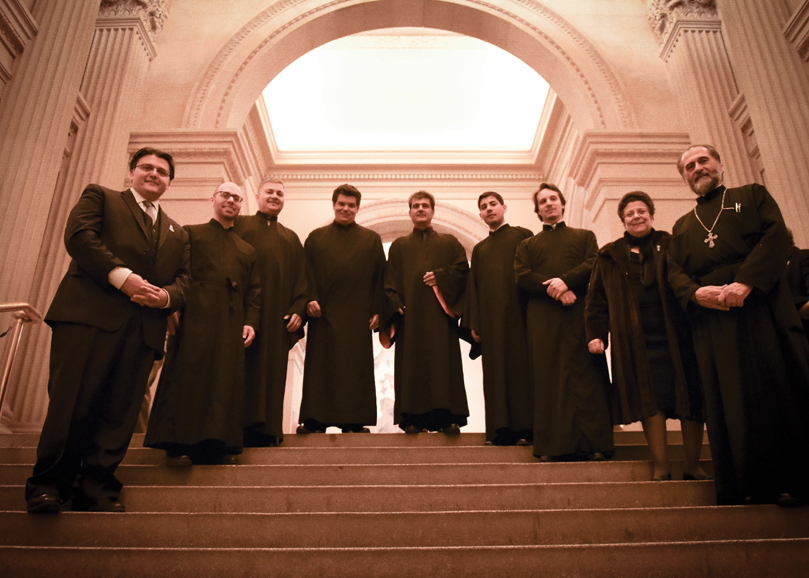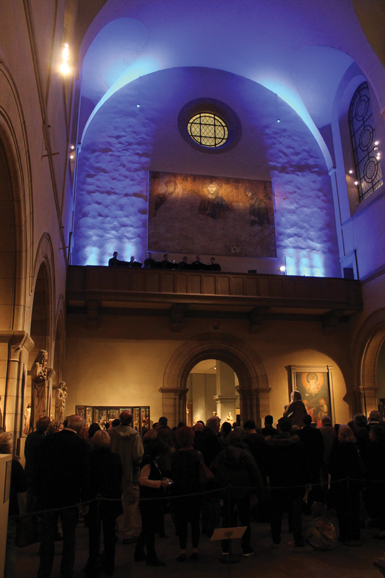Of music’s myriad styles, Byzantine is one of the lesser-known forms.
But Angelo Lampousis is trying to change that.
Lampousis is executive director of the Axion Estin Foundation, a New Rochelle-based organization designed to promote the appreciation of Byzantine music in the United States.
The Byzantine, or Eastern Roman, Empire flourished from 330 – when emperor Constantine the Great relocated the capital to Byzantium (renamed Constantinople, now Istanbul), making Christianity the official religion – to 1453, when the empire was absorbed by the Ottoman Turks.
As the West struggled to regain its footing after the fall of Rome, the Byzantine Empire developed its own culture, characterized by domed architecture, stylized mosaic icons and a unique kind of liturgical music.
“One thing that appears to have a long-term tradition is the music,” Lampousis says. “While there have been some reforms, it is has been one continuous thing dating from the 10th century.”
Byzantine religious music – which can be heard in the Eastern Orthodox Church – is music for the voice with no instrumental accompaniment. It is monophonic, with no harmony, though there is an ison, a continuous base note. It is also made up of microtones, small, subtle gradations between the whole and half steps of the Western scale.
“We are conditioned to hear the equally tempered instruments like a piano,” Lampousis says. “It’s harder to pick up the microtones.” (Though anyone who has ever heard the sinuous theme of “Pulp Fiction,” which uses the Byzantine song “Misirlou,” has experienced microtones.)
Traditionally, the text is Greek, extolling God, Jesus Christ, the Virgin Mary and the Holy Trinity. After the fall of the Byzantine Empire, certain countries like Lebanon allowed Arabic to be use.
You can experience this tradition for yourself when Axion Estin presents for the third year “The Byzantine Pop-Ups” at The Metropolitan Museum of Art in Manhattan – a series of half-hour concerts on Dec. 9 at 4 and 6 p.m. and Dec. 16 at 4, 6 and 8 p.m. Seven musicians will be in the gallery of the Medieval Sculpture Hall while others stroll around The Met’s Christmas tree and Neapolitan Baroque Crèche. Meanwhile on Dec. 9 at 7 p.m., the singers will perform Byzantine music before a concert of new music by Mohammed Fairouz. “Al-Quds: Jerusalem” is being held in conjunction with The Met’s new show “Jerusalem 1000-1400: Every People Under Heaven” (through Jan. 8).
Axion Estin has also received a $30,000 grant from the New York State Council on the Arts to develop over the next three years “Panegyris” – a program of Byzantine folk music. (Unlike the religious music, the folk music uses instrumentation and deals with everyday themes.)
Born and raised in Molaoi, a village in southern Greece, Lampousis was not an early fan of the Byzantine style, recalling how his father had to drag him to church. But he obtained two musical degrees from conservatories in Sparta and in Thessaloniki, a city in Greece’s Macedonian region that he says has “the highest concentration of Byzantine chanters and churches.” Thessaloniki made him “an educated consumer.”
Lampousis also holds a degree in agriculture from Aristotle University in Thessaloniki and a master’s degree and PhD in geology and geophysics from The City University of New York. He lectures in the environmental sciences at The City College of New York.
At Holy Trinity Greek Orthodox Church in New Rochelle, Lampousis sings as part of the congregation.
Asked what type of voice he has – baritone or tenor – he says with a laugh, “bad.”
“The Byzantine Pop-Ups” are free with Metropolitan Museum of Art admission. “Al-Quds: Jerusalem” is a ticketed concert. For more, visit metmuseum.org. And for more on Byzantine music, visit axionestin.org.






